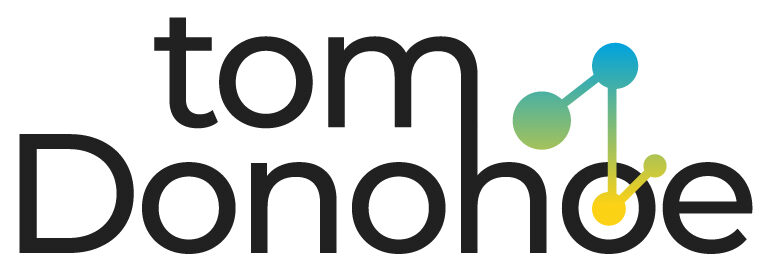What’s the Role of Higher Education in a Digital Society

By 2020, experts predict there will be 1.5 million new digitized jobs present across the globe. At the same time, 90% of organizations currently confirm a digital skills shortage, while 12.6 million adults in the UK lack fundamental digital skills.
In a time where the digital landscape is in a state of constant motion, formulating a forward-thinking approach to the kind of education that can help narrow the digital skills gap and give tomorrow’s workforce the resilience to capitalize on new opportunities and challenges is imperative.
We live in a digital society, and with less governmental funding in the sector than ever before, particularly in America, the role of education must change to offer value.
With this in mind, educators must ask the question: What is the role of higher education in a digital society?
Promotes inclusion
In a traditional classroom dynamic and what some would term an analog teaching model, a presumption that everyone operates at the same pace and has the same education needs can create significant barriers.
While a digitized classroom or learning model is often only as effective as the person teaching, it does provide a dynamic toolkit that boasts a number of opportunities to engage, include, and support a broad range of students, regardless of the subject matter.
Emerging tech trends and approaches, from digital curriculums and interactive quizzes to immersive learning applications and personalized learning development, allow learners to absorb relevant information in ways that are tailored to their individual needs while encouraging communal classroom engagement that is driven by technology.
Digital learning, if utilized with a strategic, personalized approach, is entirely inclusive, and in a time where technology has reached a notable level of sophistication, an increasing number of people can benefit rather than fall through the cracks.
Fosters collective intelligence
Due to the hyper-connective nature of digital technology, particularly in the educational sector, the potential for collective intelligence is enormous.
The sophistication of edtech developments means that today’s students can access more information, content, and educational resources than ever before, as well as share opinions, bestow knowledge onto their peers, and collaborate in real-time, without geographical boundaries through mobile applications and online forums.
Now, students in higher education settings can enhance or augment their classroom learning experience with the use of collaborative technology while continuing with their educational journeys beyond lectures with collaborative platforms and mobile access to valuable content. This approach is often referred to as ‘active blended learning’ (ABL).
Institutions such as the UK’s Northampton University have spearheaded this approach that fosters collective intelligence and ultimately gives everyone involved the tools, support, and inspiration they need to get the very most from higher education.
Talking to the e-learn magazine on active blended learning, Kate Coulson, Northampton University’s Head of Learning Development, said: “The clear focus on student activity, which involves focused interactions between students and tutors, as well as student-student and student-content. ABL combines different forms of ‘contact time’ with independent learning. It does not mean “independent study”. In an ABL context, students are expected to gain autonomy and agency. Tutor mediation and visibility are central.”
Promotes innovation and creativity
This new digital age has empowered students and tutors to explore and experiment with their educational efforts, once again taking activities and methodologies far beyond the traditional blackboard and textbook approach.
In addition to creating learning barriers, the traditional classroom dynamic can drown out certain students’ voices or opinions – not everyone is a natural speaker, after all. But, with interactive edtech-inspired platforms, apps, and developments, everybody gets a voice. And these innovations inspire creativity.
One of the most positive elements of the evolution of digital technology in the educational sector is the fact that it has highlighted the realization that the computer screen is not just an informational display. Still, it’s a versatile tool for collaboration, creation, and, well, creativity.
Take York University, for instance. Understanding the untapped creative possibilities of tech in the classroom or on campus, the pioneering institution has invested PS18 million in brand-new digital creativity labs.
In collaboration with Creative England, in addition to a small collection of other key partners, the university will use these creative digital hubs to conduct essential research, much of which will be student-led, with the view of using digital tools and innovations to yield powerful results.
Harnessing the vast potential of digital games and interactive media for economic, social, and cultural impact, York is on a mission to showcase the power of digital technologies in the educational environment. As this initiative is still in its infancy, there isn’t a great deal of data on its progress – but this is a real testament to the power of digital society’s positive impact on higher education.
By implementing mobile applications, online course content, and web-based student support initiatives into the everyday running of an institution, it’s possible not only to empower students to refine and develop new skills beyond the realms of the core curriculum but also to foster a mindset for lifelong learning that will give them the abilities to upskill and remain competitive in the future. Not only will this serve to close the global digital skills gap, but it will also showcase the value of your institution concerning student success.
Transforming digitally will allow an institution to adopt a culture that is able to embrace emerging technologies and leverage them to remain relevant and develop innovations that will drive into the future full force.
Recent studies suggest that the mobile workforce is going to double or triple in size by the end of 2018 as an increasing number of remote workers now rely on their mobile devices. This discovery alone highlights the importance of embracing new mobile technologies and equipping tomorrow’s workforce for a brand-new world.





